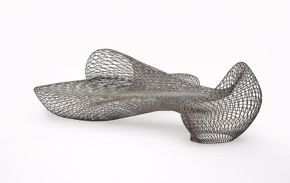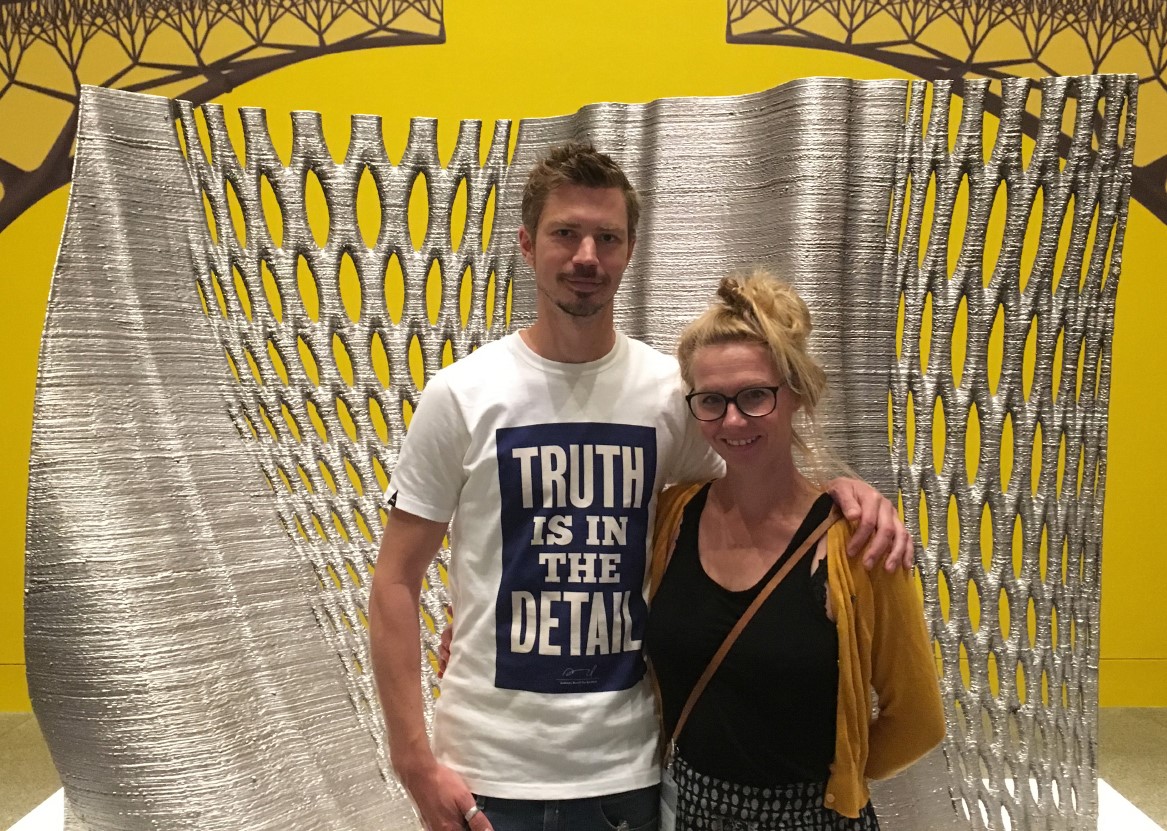Visualizing the Future: An Interview with Artists Joris Laarman & Anita Star June 29, 2018

Joris Laarman, produced by Joris Laarman Lab, Dragon Bench, designed 2014, made 2015, stainless steel, the Museum of Fine Arts, Houston, Museum purchase funded by the Caroline Wiess Law Accessions Endowment Fund. © Joris Laarman
Joris Laarman and Anita Star, founders of Joris Laarman Lab in Amsterdam, in the galleries of Joris Laarman Lab: Design in the Digital Age at the MFAH.
Joris Laarman, produced by Joris Laarman Lab, Branch Bookshelf, 2010, bronze, the Groninger Museum, the Netherlands. © Joris Laarman
Joris Laarman, produced by Joris Laarman Lab, Bone Rocker, from the collection Bone Furniture, 2008, black marble and resin, the Museum of Fine Arts, Houston, Museum purchase funded by the Mary Kathryn Lynch Kurtz Charitable Lead Trust. © Joris Laarman
Joris Laarman, produced by Joris Laarman Lab, Makerchair (Polygon), 2014, oak, courtesy of Joris Laarman Lab. © Joris Laarman
Robots that print a bridge, algorithms that aid in creating a bookcase, and furniture that emulates the structure of bones: Joris Laarman Lab, founded in the Netherlands in 2004 by designer Joris Laarman and filmmaker Anita Star, uses cutting-edge technology to pioneer new production methods.
The exhibition Joris Laarman Lab: Design in the Digital Age features examples of Laarman’s explorations of new ways to create, as the lab continues to test the boundaries between tradition and innovation. Laarman and Star chatted with me about their work, on view at the MFAH through September 16, and how design and technology can bring a positive glimpse into our future.
Joris Laarman and Anita Star in the galleries of Joris Laarman Lab
The designs on view in the exhibition are very technology-driven, but many of the videos in the galleries also show the craftsmanship that goes into them. How does the human element factor into these works?
Joris Laarman: Soon, making things will be as easy as pressing a button. Making has sort of lost all its meaning. I like to know who designed and made the things that I own. With industrial design, there’s an idea from a designer behind an object, but there’s a repetitive production. Digital replication is different. Everything can be made in a unique way, with mass customization. As a carpenter uses a chisel or a hammer, we use 3-D printing and digital tools to make these objects, which are partly craftsmanship, partly digital design.
The exhibition features several videos showing how the objects were made and can be used. How do the videos and designs work together?
Anita Star: I think that without the videos, the pieces would be very difficult to understand! A big part of the work is showing the progress of how things are made. You can see new production techniques in action.
JL: You can see the struggle in the videos. If you look at a finished piece, you think that it’s a nice-looking object, but then you don’t see what went into it.
Your work is driven by functionality, but people can’t exactly try out these objects in a museum setting. So, are these chairs comfortable?
JL: Yeah, they are! You would be surprised! To me, functionality is the most important for storytelling. A good design is like a complex puzzle in which all elements fit each other very well. You also have the material’s properties, new technology, and other factors to take into account. When they all work together, then you have a really good design.
What do you hope people take away from this exhibition?
AS: You have to feel, in a way, very optimistic about the future and what it will look like. Hopefully you are filled with energy and walk away going, “Wow, it’s going to look amazing!”
JL: People tend to be really scared about the future, and we try to give people an exciting look into what it can be. Technology can also be used to create beautiful objects.
Hit “play” below to watch Anita Star’s video highlighting the processes for creating some of the works on view in the exhibition.
Learn more about “Joris Laarman Lab: Design in the Digital Age,” on view in the Beck Building through September 16.






